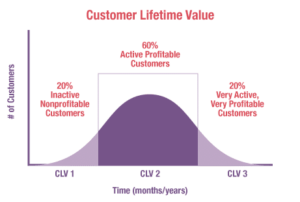5 Success Metrics That You Should Pay Attention To
As a new business owner, being organized is your best friend.
And what is the key to establishing organization within your business? Success metrics.
You may be asking, what are those anyway? Success metrics aren’t some hot buzz word, they’re just what they sound like — measurements of success against rivals or certain objectives. Pretty straight forward, right?
There are so many different ways to track the success of your business, so it can be difficult to know which ones to really pay attention to.
So we’ve made it a little easier for you. Here are 5 success metrics that actually matter:
1.) Customer Satisfaction and Success
Let’s start with an easy one: how happy are your customers? What is the value they are receiving from your service? How has your service positively affected them and their lives?
Making sure your customers are satisfied is the greatest factor in the overall success of your business. If your customers feel content with the experience that your gym is providing them, then they’ll keep coming back!
Not to mention, one customer’s satisfaction can seriously help your business’ success in the future. If people love your gym, they’ll recommend it to friends and family! However, if they don’t, they’ll discourage others to try it out, resulting in a loss of potential customers for you.
But word of mouth isn’t the only way people can share their opinions about your business. Review sites like Yelp or trackers like Net Promoter Score can make customer feedback more powerful than ever with the click of a button. NPS for example, which is used by billions of businesses, measures a customer’s loyalty to a business based on the likelihood they’d recommend the company to others. The business receives a score from 1 to 10, driven by negative and positive comments on the company. This gives great insight into how current and potential customers are viewing your company.
Reviews are everything. But don’t let this scare you, it can actually be your guiding light!
Most important, though, is listening to what your customers have to say. If you’re ever unsure how your customers are feeling, send out a survey with a few short questions for them to answer or just have a conversation with a member! At the end of the day, your customers determine how successful your business is, so your goal is to make sure they are happy.
2.) Customer Retention
Retention or churn rates unveil a lot about how your business is really doing. Sounds scary, we know. But this information will help you make your business better and more successful!
Your retention rate measures how many of your customers stick with your company and how many leave. News flash: not all of your customers will stay. Don’t let that discourage you, because it’s going to happen!
It’s extremely important, however, to keep your retention rate as low as possible. After all, it’s far easier and less expensive to keep a current customer than to bring in a new one.
So how can you find your retention/churn rate?
This can be done a few different ways. First, you must determine what time frame you’re going to examine. You can choose whatever works best for you, as long as you keep it consistent. Some people choose to examine their numbers monthly, quarterly, or even annually. Once you’ve decided, take your number of members at the beginning of said time frame and subtract the number of customers you’ve retained at the end of that time frame. Next, divide that new number by the number of members at the beginning of this time frame. The number you are left with is your retention/churn rate.

If you have any questions or are confused about retention rates, check out Hubspot’s awesome blog post, “What is Customer Churn?”
3.) MRR
Monthly Recurring Revenue, or MRR, is the income your business can count on each month. This can be calculated by multiplying the total number of paying customers by the average revenue per user.
To put it simply, your MRR will show you how much your customers are spending each month on the products and services your gym is providing!
MRR is vital, as it can reveal whether or not your business’ growth is maintainable. Understanding your Monthly Recurring Revenue better helps you track your growth, encourage your business’s employees, establish a smarter budget, and better predict future sales projections.
4.) CLV
Next, let’s talk about CLV, or Customer Lifetime Value.
CLV reveals the total revenue that one individual customer is expected to bring into your business throughout their total time with you, helping you understand your cost per acquisition.
CLV helps you predict how much repeat business you are likely to get from a certain customer. This is a game-changer because it makes understanding how to distribute all your money and resources a breeze! CLV allows you to optimize the money you invest in your members and know what to value. You can’t just think about your acquisition costs, you should also think about the advantages each individual brings to your business.
To learn more about Customer Lifetime Value (CLV), check out Qualtrics for more helpful explanations and examples!

5.) Attendance
This last metric is short and sweet — and also super basic!
As a gym owner, you must ALWAYS keep an eye on attendance.
All you’re looking for is if your members are showing up to their classes or not. Yup. It’s that simple. This can signal a loss of interest in your gym or in a certain activity you may be providing. It can also mean you’re likely to soon lose a customer!
For example, let’s say you have a class that many students have been skipping lately. This lets you know that this class is not going to lead to much success for you, and you should probably reexamine your approach or replace it with a different class.
Success metrics are the secret behind maintaining an organized gym. And luckily they aren’t as complicated as one would think at first glance. Now, think you’re ready for success? We do!

